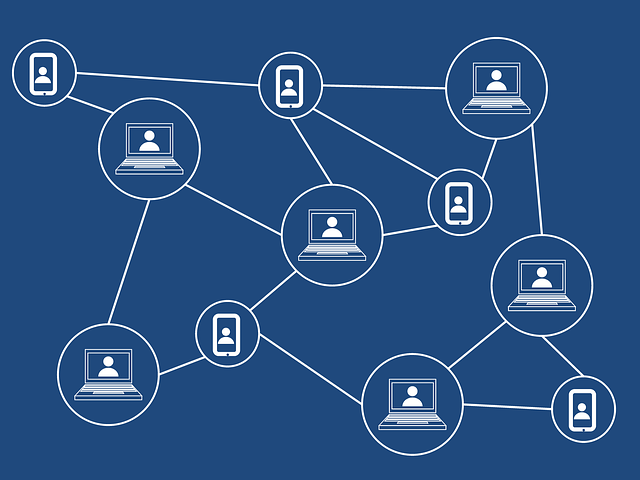
A Brief on 51% Attack in cryptocurrency
A 51% attack refers to an attack in the blockchain of a cryptocurrency by the…

Cryptocurrencies squarely rely on two important technologies which include cryptography and blockchain. Put simply, it is these two technologies that have anchored cryptos and made them the talk of town they are today. Alongside these technologies is cryptocurrency mining and nodes. By now, you must be adequately aware that cryptocurrency mining is the process through which the virtual currencies come to be. The process of crypto mining involves high-tech process performed by crypto nodes.
Crypto nodes on the other hand is every individual computer which is connected to a network of others, follows protocols and allows crosscutting exchange of information. For a detailed understanding of how crypto nodes are set up and operate in real life, please read, What is a Bitcoin Node? From a basic understanding of nodes, comes the question on how the old ones really link up with new ones so that the blockchain remains a continuity. The answer to this is soft fork.
In cryptocurrency, a soft fork allows nodes in new crypto to communicate with the old nodes and vice versa. It means that even though there are updates, there is no creation of a new blockchain. This is because the original one remains.
In blockchain technology, a soft fork refers to a change in software protocol and the previous valid transactions become invalid. The main reason is that the old nodes regard the new blocks as legit. Therefore, the soft fork is backward compatible.
A soft fork is a temporary split that is different as compared to a hard fork. In a soft fork, nodes from the old consensus are allowed to consider new transactions as valid. Moreover, the soft forks do not need all the miners to agree in running a new code. It may be implemented if most of the traders agree.
The fact that it does not allow everyone to all people to agree is good. The reason is that network upgrades may be carried out so fast as long as most members of the community agree. In some cases, a soft fork takes place because of a miner’s mistake. It happens when the old nodes violate new rules which one is not aware of. Funnily, the best way of reversing a soft fork is through a hard fork.
When a soft fork takes place in crypto, the rules governing a block’s acceptance in the blockchain are changed. The rules are considered backward compatible. This simply means that new rules included in the new version are a subset of the old rules. An example is in case the speed limit of a town is changed from 50 to 70 km/h then the people driving at 50 km/h are still obeying the rules.
A soft fork does not highly disrupt a blockchain. It is dues to the fact that the nodes do not need to change all blocks that were previously mined for the blocks to be valid after the announcement of a new framework. Therefore, they will be accepted according to the new rules.
Soft forking is a semi-permanent divergence form in blockchain technology. Because the changes are less drastic, they do not result in high changes in the crypto’s market value. Besides, the changes can be easily reversed.
An example is the SegWit Soft Fork that took place in 2017. During that time, the segregated witness protocol soft fork took place in the Bitcoin chain. Its main implementation was to increase the limit of the block size. Another implementation was increasing the chain’s transaction speed.
Even though it was a soft fork, it influenced some of the miners who did not want the new protocol to push for a hard fork thus developing Bitcoin Cash. Segwit changed the format of transactions and blocks. This was to allow the old nodes to validate transactions and blocks.
The soft fork and hard fork serve varied objectives. Even though a disputable hard fork usually divides the community but clever and well-planned ones may result in software modification. However, everyone has to be in an agreement.
According to the crypto exchanges, soft fork and hard fork serve distinct purposes. For this, the hard forks may replace soft forks as they tend to be diplomatic and gentle. If the updates do not alter the current regulations, then there is no need of being worried.
Soft fork in cryptocurrency tends to add or alter function by not interfering with the structure of the blockchain. Some of the reasons that might make it take place include software upgrades or change and a change in the consensus algorithm.
In a case where most of the miners in a network upgrade utilize hashing power in enforcing rules then this is a miner-activated soft fork (MASF). On the other hand, a user-activated soft fork (UASF) is when all the nodes coordinate in enforcing new rules. However, the miners do not have to support the decision.
While the hard fork is backward incompatible, the soft fork is backward compatible. Also, a hard fork is reversible while a soft fork is irreversible. The only way of correcting it is to turn it to a hard fork first. Moreover, a hard fork develops two blockchains in the end while a soft fork creates a single blockchain in the end.
A hard fork also seems to be more secure than a soft fork. With regards to the rules, the hard fork needs all the miners to validate the new rules. However, as for soft fork, it just needs a majority of the miners to agree. Even though a hard fork changes all the rules in the blockchain, a soft fork utilizes adding new properties and features in a blockchain.